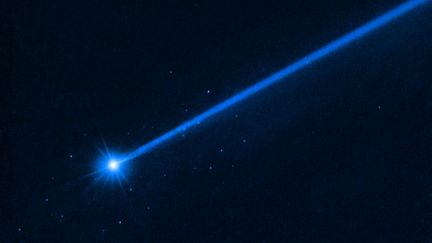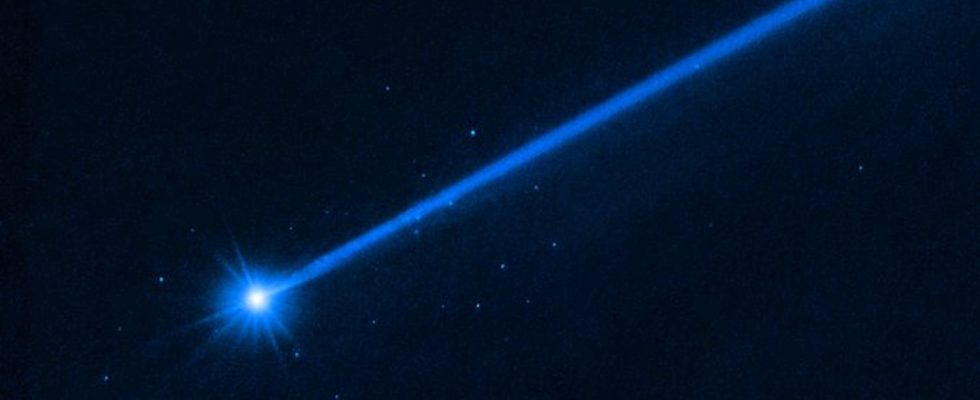The Hubble Space Telescope observed the aftermath of the successful DART mission, which crashed into the asteroid Dimorphos in September 2022, about 11 million km from Earth.
Posted
Update
Reading time : 1 min.

The establishment of a system of “planetary defense” facing asteroids will it have uncontrollable consequences? A “cloud of rocks” was generated after the impact of the DART spacecraft on an asteroid, about 11 million km from Earth. This was observed by the Hubble Space Telescope on Thursday July 20.
The DART mission, launched in November 2021 for an unprecedented test mission, was a success. The kamikaze ship successfully crashed into the asteroid Dimorphos in September 2022. The DART impact altered the course of Dimorphos well. But Hubble images show the collision also released 37 boulders ranging in size from one to more than seven meters wide.
These rocks represent some 2% of all those that have been identified on the surface of the asteroid. Dimorphos, which measures 160 meters in diameter, is more like an amalgam of large rocks linked by their mutual gravity than a solid mass.
The European Hera mission will inspect the damage in 2026
Rocks scattered by the impact are moving away from the asteroid very slowly, at about one kph, according to a statement from the Hubble Space Telescope. A slowness that will allow the mission of the European Space Agency Hera to observe the rocks. She must go there to inspect the asteroid in 2026. “We have Hera who will arrive to complete […] to give us the result of the impact […] Without this information, it is difficult to interpret why we have deviated so much”had explained to franceinfo Patrick Michel, director of research at the CNRS, at the Observatory of the Côte d’Azur, scientific manager of the Hera mission.
The cloud “looks like a swarm of bees stretching slowly”notes David Jewitt, an astronomer at the University of California and first author of a study on the subject recently published in Astrophysical Journal Letters. Scientists will continue to study the trajectory of the rocks to understand “in which directions they were ejected from the surface”.

